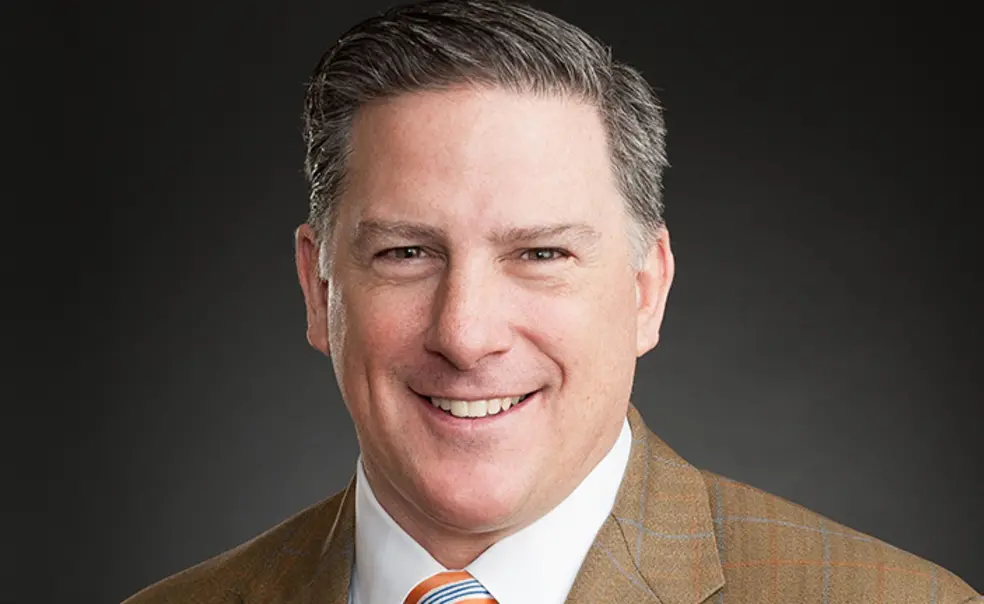Gregory DiFelice ’89 Is Bringing Back ACL Repair With New Technology
‘It’s been a total game changer for my patients and I’
Dr. Gregory DiFelice ’89 was perplexed. He had been treating anterior cruciate ligament (ACL) injuries for years and had long since mastered the standard reconstruction surgery. But soon after accepting a position as director of sports medicine and joint reconstruction surgery at the North Bronx Healthcare Network, DiFelice faced a serious problem: His ACL reconstruction patients were struggling much more than the high-level athletes he had treated in his previous roles. Why were his patients in the Bronx doing so poorly?
The answer turned out to be socioeconomic as much as medical.
“What I learned was a great lesson in the social determinants of health,” DiFelice explains. “When you do an ACL reconstruction on someone who does not necessarily have access to the same resources and support as the ‘haves’ in society, this can result in a poorer outcome.” His patients struggled to adhere to mandated rest periods and attend the dozens of post-op physical therapy appointments they needed, among other things.
DiFelice knew he couldn’t change his patients’ life circumstances. But what if he could change the surgery itself?
This was no small undertaking. ACL reconstruction — in which the surgeon creates a new ligament using a graft of tissue either from another part of the patient’s body or from a cadaver — has been the standard option for ACL tears for decades.
“If you open up any textbook in orthopedic sports medicine today, it will say the ACL cannot heal because it has poor blood supply, and this is why reconstruction is necessary,” DiFelice explains. “It is the first commandment of sports medicine.”
But that edict was failing his patients. DiFelice needed a simpler recovery process. He suspected there may be an alternative approach to the type of tears in which the ligament tore cleanly off the bone but remained otherwise intact.
DiFelice turned to primary ACL repair, in which the surgeon reattaches the torn ligament to the bone rather than replacing it with a graft. The technique fell out of favor in the late 1980s due to a middling success rate, but DiFelice felt that technological advancements could revive it. With modern MRI machines, he could confidently identify which tears could be repaired. Further, he could do minimally invasive surgery using an arthroscope and simplify the patient’s recovery process.
Soon, he had developed a revolutionary arthroscopic primary ACL repair technique. “We’ve leveraged the modern-day advances in imaging, surgical technology, and rehabilitation to build off of the historical experience,” DiFelice explains.
The results have been exhilarating. “It’s been a total game changer for my patients and I,” DiFelice says. He has now performed more than 325 arthroscopic primary ACL repairs for patients with the appropriate tear pattern. These carefully selected patients have fared as well or better than recipients of ACL reconstruction, and they recover in a fraction of the time. In 2019, a New York Times health columnist touted the procedure after her son experienced it.
What began as a solution to a local problem is beginning to spread around the globe. DiFelice has lectured and written extensively on the topic, and surgeons around the world have started to perform arthroscopic primary ACL repairs.
Amid the acclaim, DiFelice has also experienced his share of backlash from doctors who feel it is unwise to reconsider a well-established surgery. “Any time you disrupt the status quo, you’re going to get a lot of pushback,” he says. “Change is hard.”
DiFelice credits his time at Princeton with giving him the strength to stand firm in the face of opposition. “Princeton teaches you to question things and follow up in a way that’s scientific and logical,” he says. “It teaches you how to think, and it gives you the confidence to follow up on your ideas and not be shouted down.”












No responses yet